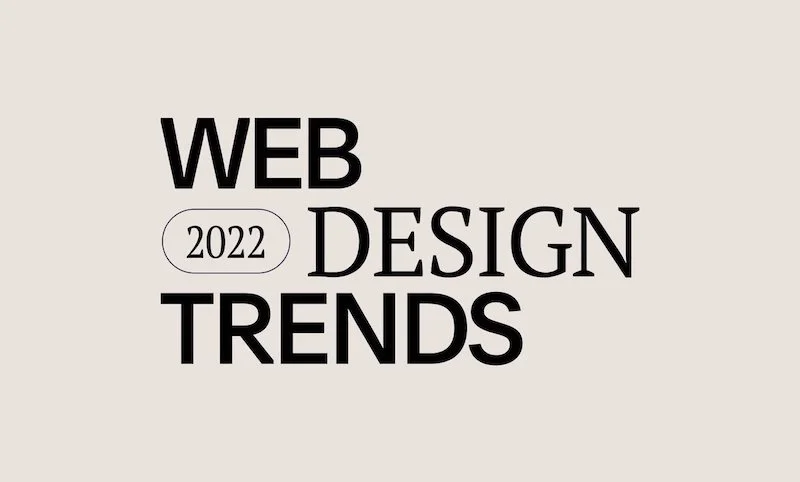2022 Web Design Trends
As 2021’s impact on our ecosystem grows, community and social commerce have become stronger than ever. Our interactions online now shape our lifestyles in many different ways. As such, the importance of responsive and adaptive web design will only increase in 2022. From over-the-top typography and one-page websites to futuristic 3D elements, the new year is expected to shake up web design as we know it.
In the new year, cut through the noise and stand out with a clear brand identity by utilizing these top five web design trends of 2022.
1. Type lead
Bold and extravagant typography may have taken a backseat to more minimal options in modern design. As a continuation of the Type Chaos trend that was popular in 2021, anticipate that the hero font will make a comeback as an instant eyecatcher in 2022. Incorporating oversized lettering combines elements of shock value with an aesthetic of conviction.
Opting for stylized bold typography could replace the need to lead with an image banner, but could also easily integrate itself into chosen imagery as well. A bold typeface presents a no-hassle way to strongly communicate the brand identity within the first few moments. This could also be a way to maximize use of text-based logos.
2. 3D ecommerce images
2021 saw a boom in the use of 3D design elements from images to text, and this won't slow down in 2022. 360 ecommerce animations can be integrated using GIFs or code. These present a futuristic element to showcase product details, boost interactivity, and increase average visit duration by capturing the browser’s attention for longer.
As digital content proliferates and visitors become more demanding, their expectations for personalized experiences also grow. Making use of dimension, movement, and shapes are a recipe to make mobile commerce experiential in our virtual ecosystem.
3. Single-page websites
One-page websites with little to no menus and navigation are a bold choice that challenge the existing structure of a traditional website. The choice to opt for a one-page site shows visitors a new way to explore content. It can also help communicate very clear, no-frills messaging that delivers a prompt call to action.
The goal here is to create a succinct browser experience with all of what it needs and none of what it doesn’t. The simplicity of the one-page layout makes the user experience straightforward and exceedingly mobile friendly, not to mention easy for your clients to maintain.
4. App style websites
In an effort to stand out, playing up familiarity may be the way to go. Many visitors are already comfortable with the layouts of common mobile apps. As such, utilizing elements of UI—from scale to rounded edges and flat designs—can create an experience where users feel more aligned with the content.
Also, because many users navigate websites via mobile devices, maintaining a layout that can be intuitively navigated promotes engagement and conversion, while amplifying responsive design.
5. Grids and lines
The grid remains a staple design element even as visitors seek out more curated website experiences. The use of grids and lines can guide the user's eyes through a site and act as a map of how to explore the platform and its offerings.
From using gridlines to lay out products on your ecommerce site, to creating collapsible FAQs that are easy to navigate, incorporating geometry will help your brand stand out in 2022.
Conclusion
For 2022, cutting through the noise and standing out with clear brand identity in a saturated virtual habitat will be top of mind for clients. To achieve this, take advantage of responsive design with app style sites, grids and 3D animation to bring functional and aesthetically unique sites to life.
Want more?
Check out Squarespace Circle, Squarespace’s program for professional designers. Along with exclusive content, discounts, and other perks, Circle brings professionals together from all across the globe to exchange advice while connecting with new clients and collaborators.






